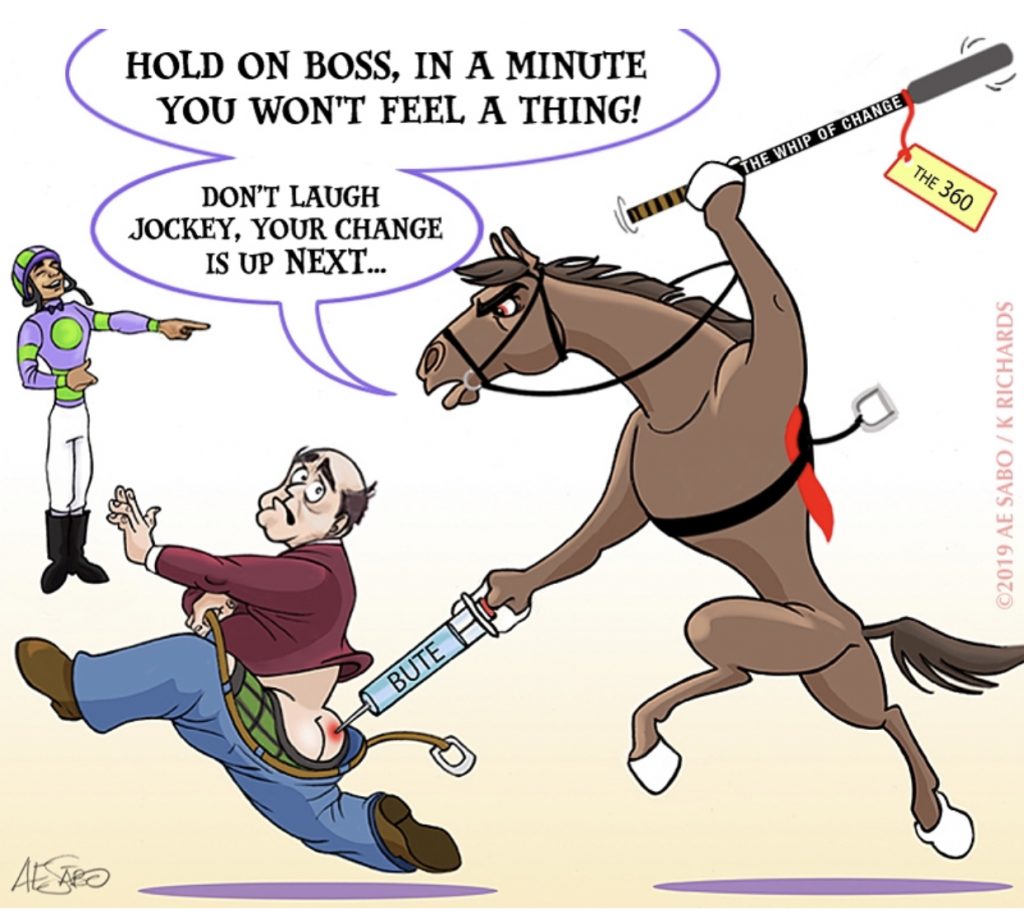
By Kate Richards
My professor sucked in his breath as he considered my request.“I should have known that you would be late again on this week’s paper…Derby, huh?” he asked.
“Yessir” I responded. “That and I am still making those charity hats.” I replied. “Something has come up that I want to share with you.” “Is this about the Santa Anita track issues and your ideas about change mechanics for racing?” he asked. “I read your discussion boards and started following some of the media reports aligns with your Doctoral concentration.”
This particular class is a second time I have had this professor, a change management and development consultant and leadership coach whose client list runs from Fortune 500 corporations to third world non-profits. My school hires only those Ph.Ds. and DBAs that have
both academic and real-world chops. That is to state that these instructors have dealt with budgets, diversity, crisis management and human capital outside the scholarly world of theory and data.
My fellow cohorts are mid to upper-level management and tech types with a goodly sprinkling of retired military. Dr. Sam (not his real name) is droll, a tough grader and consummately curious about his student’s relevant experiences, their intuitive ‘gut’ observations
and their ability to synthesize complex methodology.
I enjoy our class chats as he is a muscular listener as opposed to a professor who talks and talks and does not seem to care if students are plugged into what is being said. Finally, he said, “Kate, I am going to give you a one-day allowance” I breathed easier and then he jumped in; “I want you to write several pages also as to specific parallels that you are finding from this current racing industry scenario…so make it good…with references” I interrupted, “That is just it, I got to thinking that there are racehorse training terms that are similar or identical to those in our organizational development text” Dr. Sam asked “What are they…moreover, Kate, drill it down. I do not require deep background or the trackside lore that you are so fond of.”
“Changing leads, focus corrections and agility” I said. He was quiet and it came across the phone as thoughtful. “Now this presents a whole galaxy of parallels.” He offered. “Are those training terms for the horses?” “Yup” I said. “Focus corrections come into play when a racehorse with 360-degree vision is typically distracted, so blinkers are added, and ear mufflers can be added to drown out the noise…a lot of the whip action is misleading as the jockey, is directing the lead changes, much like a change sponsor messages and then guides their organization….agility is ability and adaptation that the elite horses bring to the game with traveling and various track conditions.” Dr. Sam exclaimed, “And the front office folks cannot orient themselves to the same learning patterns that are required of the animals?” he asked, shocked. He got quiet again. “Interesting. Start writing…I want to give this some thought.”
As I began to click off my cell, I heard his voice asking another question; “My wife read yesterday that the major tracks are struggling to regulate the use of the whips that jockeys use….” I jumped in, “Interesting that you mention that. I saw an interview with a retired jockey, Ramon Dominquez on TVG and he was talking about his 360-whip design. I happened to mention that to a racing executive and her response was that Ramon had had his 360-whip design, a cylinder tipped bat that has a softer impact, ready to go for about ten years…. ten years ago, he created this potentially better solution. Now it is getting attention because of the mainstream media coverage coming out of the Santa Anita situation” I said. “Started with the deaths and then the track surface and here came the sleeper issues of race day drugs, whips and use of bone stabilizers on younger horses that creates more faults than it helps…now the issues are layered, and one is fueling the other.”
He responded, “reactive rather than proactive…describes the traditional do not fix it if it ain’t broke philosophy…happens to older institutions…something unexpected will happen and the whole plethora of sleeper issues come into play.” Dr. Sam continued, “Is there that much resistance within the industry?… any work being done with futuring, systems thinking or agility teams?
The use of agility teams is in your required reading this week. Look into the Google case…also if there are elements of group resistance, think about how a world café concept would work as a precursor to a track organization forming an agility team comprised of employees, fans and executives”. I offered,“I read those studies… so what you are thinking out loud about is gleaning the input from different groups through a chat café and then the forming agility teams to experiment with the viability of some of their solutions and ideas”. “Yes” he said quickly. “That works on another level of broadcasting respect for fan and employee input and most importantly, helps to rebuild trust…trust is at the heart of this.” I added,
“Change and forward thinking are now a ‘gotta do it’ before the Feds and activists gotcha game sinks their fangs into the sport…it sounds like a Nike ad…the mainstream media is playing gotcha as well.”
We both needed to leave the subject for now, so we said our goodbyes. I had one more thought to add. “Dr. Sam…we covered the parallel with aligned terms and a viable solution…is a grade for this out of the question…I mean we ran through the content for session” Again, a moment passed. Finally, he said“Kate, go do your Nike thing. Nice try.” CLICK
Always check with Past the Wire for the latest horse racing news…..



